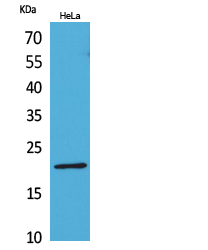Mouse anti Human CD3 FITC - CD44 PE
B344S
ApplicationsFlow Cytometry
Product group Antibodies
ReactivityHuman
TargetCD3E
Overview
- SupplierNordic-MUbio
- Product NameMouse anti Human CD3 FITC - CD44 PE
- Delivery Days Customer7
- Application Supplier NotePBMC: Add10 microl of MAB/10^6 PBMC in 100 microl PBS. Mix gently and incubate for 15 minutes at 2 to 8C. Wash twice with PBS and analyze or fix with 0.5% v/v of paraformaldehyde in PBS and analyze. WHOLE BLOOD: Add10 microl of MAB/100 microl of whole blood. Mix gently and incubate for 15 minutes at room temperature 20C. Lyse the whole blood. Wash once with PBS and analyze or fix with 0.5% v/v of paraformaldehyde in PBS and analyze. See instrument manufacturers instructions for Lysed Whole Blood and Immunofluorescence analysis with a flow cytometer or microscope.
- ApplicationsFlow Cytometry
- Applications SupplierFlow Cytometry
- CertificationResearch Use Only
- ConjugateFITC, RPE
- Gene ID916
- Target nameCD3E
- Target descriptionCD3 epsilon subunit of T-cell receptor complex
- Target synonymsCD3epsilon, IMD18, T3E, TCRE, T-cell surface glycoprotein CD3 epsilon chain, CD3-epsilon, CD3e antigen, epsilon polypeptide (TiT3 complex), CD3e molecule, epsilon (CD3-TCR complex), T-cell antigen receptor complex, epsilon subunit of T3, T-cell surface antigen T3/Leu-4 epsilon chain
- HostMouse
- Protein IDP07766
- Protein NameT-cell surface glycoprotein CD3 epsilon chain
- Scientific DescriptionCD3 FITC - CD44 PE
- Shelf life instructionSee expiration date on vial
- ReactivityHuman
- Reactivity SupplierHuman
- Reactivity Supplier NoteCD3=Derived from the hybridization of mouse NS-1 myeloma celss with spleen cells from BALB/c mice immunized with human thymocytes. CD44=Derived from the hybridization of mouse Sp2/0 myeloma cells with spleen cells from BALB/c mice immunized with TCR-gamma epsilon thymocytes
- Storage Instruction2°C to 8°C
- UNSPSC12352203








